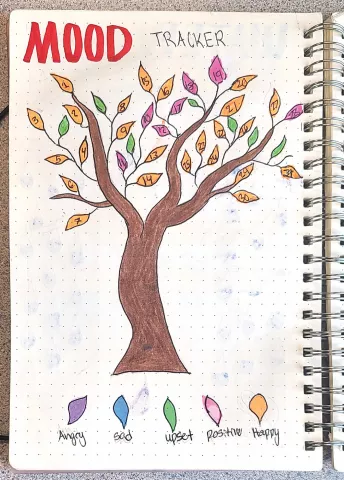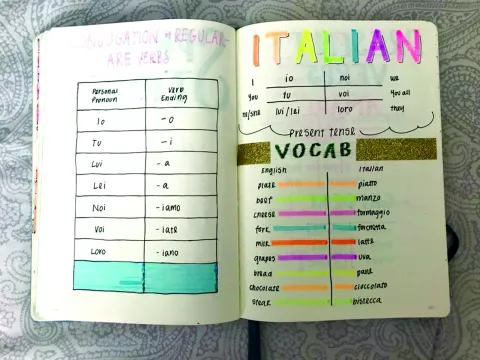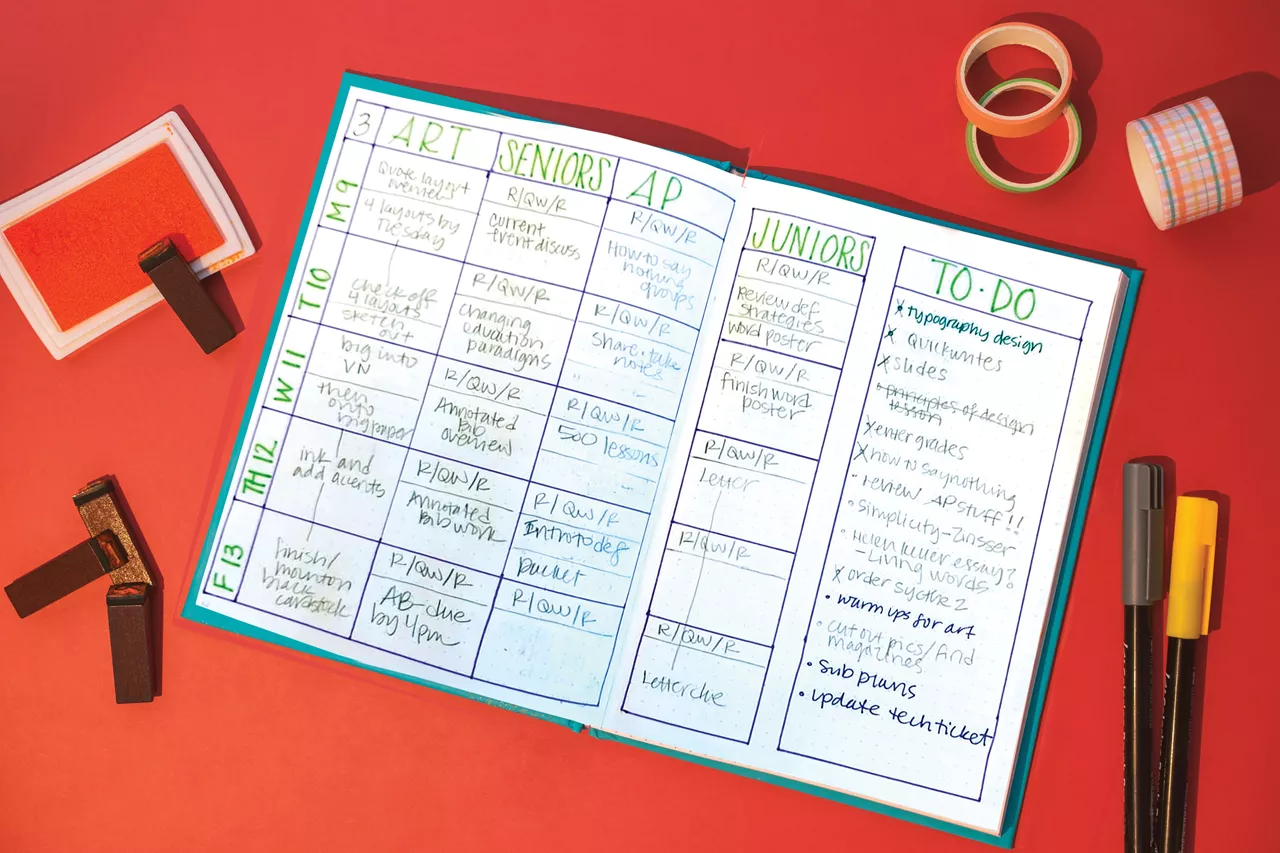Welcome to my bullet journal life. I stumbled upon bullet journaling in August 2016, when I bought a journal because I liked the army-green cover. When I saw that the pages were dotted, I had no idea what to do. I started to do some online research and then fell down the rabbit hole.
Setting up my own system for planning and tracking? Yes, please! This was the answer to years of buying planners, only to toss them aside when I got tired of following a preplanned page. Bullet journaling was a life-changer.
I have taught high school English for 20 years. My bullet journal sits open on my desk every day. I use a lot of colors and doodles, so it is quite an attention-getter. I allow students to flip through it, and I answer their questions about it. On occasion, I even let them doodle in it or sign their names with my fancy pens!
Help students reflect
The first time I shared this practice with students, I had a small class of Advanced Placement (AP) English students who asked if we could dedicate class time to bullet journaling. So, we did!

Every Friday (if they had completed their AP work for the week), I brought in all of my markers, turned on some chill music, and we would talk and journal together.
I have taught my students to track habits—including exercise, self-care, and homework time—which helps them see their patterns. This has led to many conversations about how they can improve balance in their lives.
I helped a young man, who was struggling with depression, to set up a mood and sleep tracker. And a young woman with multiple college options set up a list of pros and cons.
Some students, inspired by Pinterest, made “date idea” lists for their weekends or “books to read” lists. One student was studying the flags of different countries and set a goal to draw and color every country’s flag in the world.
Our bullet journals were creative, productive, and created a sense of community in our classroom.
After three years of bullet journaling and seeing the impact it had on my students, I was inspired to earn an additional teaching endorsement in art.
Then I created an art class (which more than 150 students signed up for) that includes a unit on bullet journaling, art journaling, and sketchnoting, which is visual note-taking with drawings, symbols, and text.
Improve your practice—and your life
I use my bullet journal to support my work, too. From taking notes at a staff meeting to planning out my week and to-do lists. I use creative styles as well as traditional bullet journaling techniques.
With rapid-logging, I quickly plan out and prioritize the tasks ahead. I use this technique as well as a daily log for both my school and personal journaling.
I teach four subjects, so having a daily log helps me prepare for each class.

With two daughters, each in a different school district, I use a future log to map out important dates throughout the school year. This allows me to see scheduling conflicts in advance so I can make appropriate arrangements.
A strategy called “migration”—or transferring a task from one day, week, or month to another—significantly improves my productivity and balance. When it’s time to migrate, I’m encouraged to reflect on my priorities, and I see where I am putting my energy and time. Then I evaluate if the way I’m spending my time is congruent with my values. It’s a powerful process.
I tell my students that I am a “recovered perfectionist” thanks to bullet journaling. This is a meaningful conversation for advanced high schoolers, who put immense pressure on themselves to perform.
I share how creating collections and setting goals on paper—and getting my to-do lists out of my head!—helps me envision what I can achieve.
Breaking down my goals with the 5, 4, 3, 2, 1 exercise (setting goals for 5 years, 4 months, 3 weeks, 2 days, and the next hour) helps me feel less overwhelmed.
In the book The Bullet Journal Method, author Ryder Carroll shares the concept of memento mori, which means “remember death” in Latin. I write that quote in every new journal as a reminder that time is ephemeral and my priorities and values need to reflect that.
This perspective has directly impacted my teaching, allowing me to focus on what really matters in my work with students. My instruction is more organized and intentional because I prioritize what matters and discard what is distracting and unimportant.
To say that bullet journaling has changed my life is an understatement. By tracking my habits, I see patterns emerge in how I can improve my life as a teacher, mom, and woman. The practice has led to stronger relationships and connections with students and helped both me and my students feel empowered and in control of our lives.
Toni Allyn teaches English and art at Hockinson High School, in Brush Prairie, Wash.
Find out about bullet journaling methods and benefits



